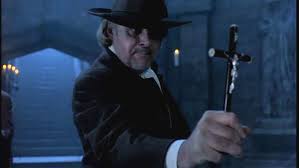In Tennyson’s poem a woman known as “The Lady of Shalott” is cursed to live in an isolated tower. As a second condition of this curse, the woman is confined to look at a mirror. As she stares at the mirror she weaves together an image of Camelot as she sees it in the reflection. While in her tower, Sir Lancelot rides by and is seen by the lady. The final stanzas of Part 3 read, “the mirror crack’d from side to side; “The curse is come upon me,” cried The Lady of Shalott” (1184). In the poem’s conclusion, the lady leaves the tower in a boat, only to die before meeting Lancelot. Interestingly enough, this is the first time Lancelot sees the lady–who died traveling to the palace at Camelot. Upon seeing her body, Lancelot said “She has a lovely face; God in his mercy her grace” (1185).

This poem puts forth two complicated ideas about Victorian gender-dynamics. First we have the Lady of Shalott who induces the curse by her desire to see Lancelot. While her affinity with Lancelot ultimately results in her death, her interest in him also leads her to leave the tower. In this way, Lancelot appears representative of the freedom a man can bring to a woman. Her desire for companionship is evident in another line of the poem, “when the moon was overhead, Came two young lovers lately wed; ‘I am half sick of shadows,’ said Lady of Shalott” (1883). The loneliness the lady experiences in seeing the newly weds demonstrates her disscontempt with her isolation. In this way, Lancelot represents how the male being can alleviate the Lady of Shalott’s desolation.
The second idea put forth is the superficial value of women. When the Lady of Shalott is discovered, Lancelot says nothing of her character or situation, but simply comments on her physical qualities. It’s ironic, as Lancelot’s only lines in this poem are in reference to the lady’s features. Nearly this entire poem is dedicated to the lady’s curse and her struggles–yet the on lookers who received her body know none of this. To them and Lancelot, the lady appears as nothing more than “a lovely face” (1884). The Lady of Shalott signifies the only form of beauty that men found in women at the time–surface beauty. In these ways, the poem depicts a world where men are the saviors of women and where women are nothing more than vessels of beauty.

